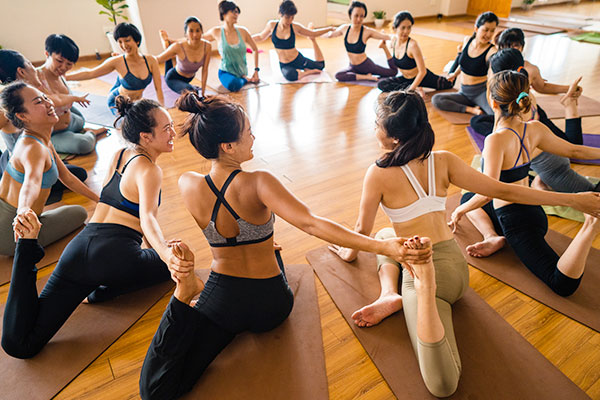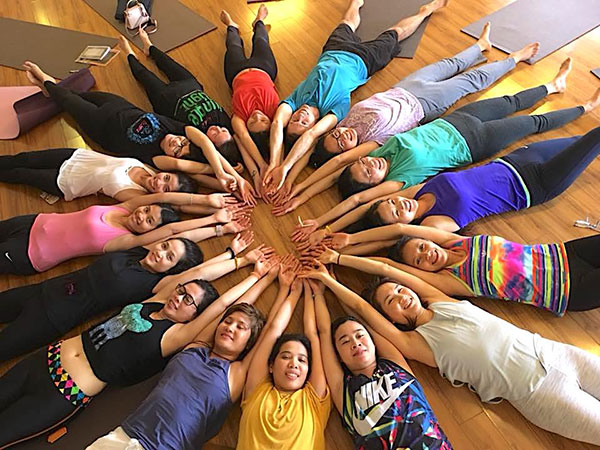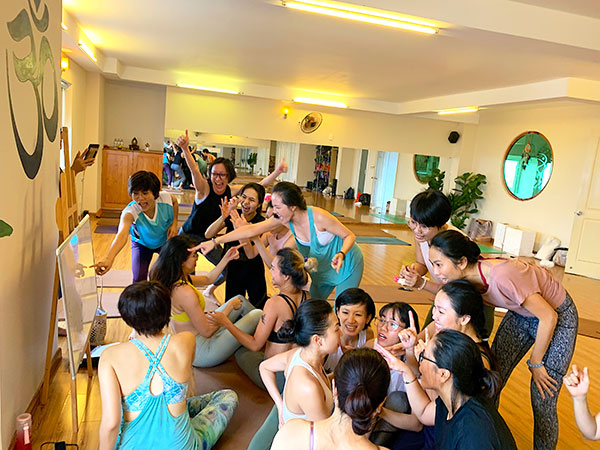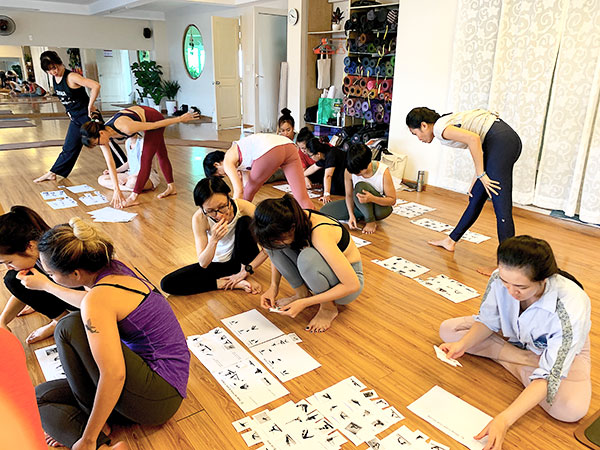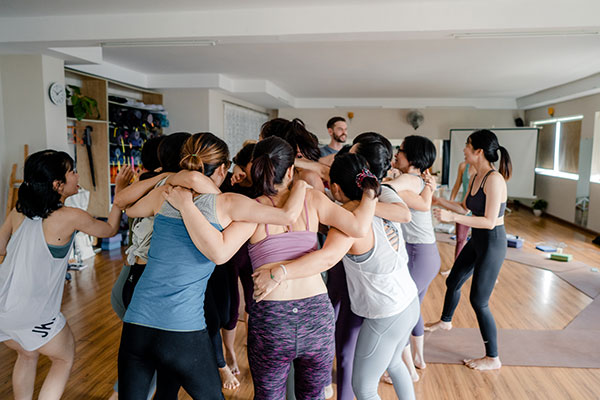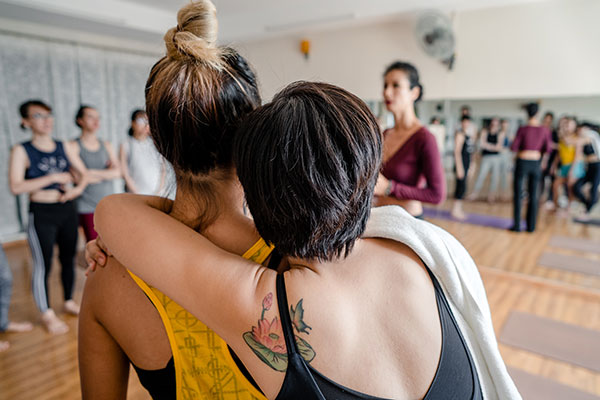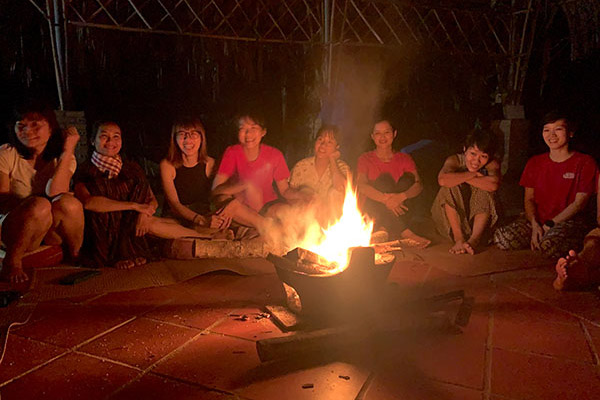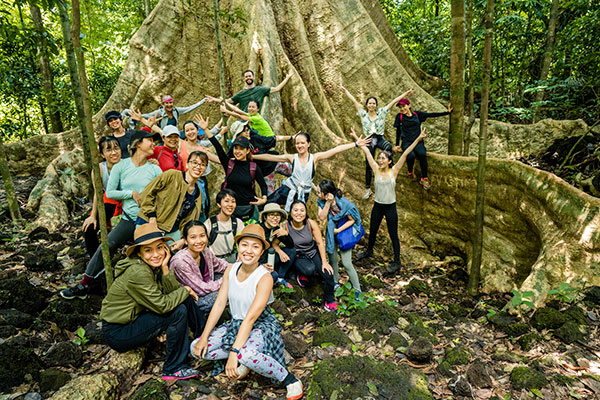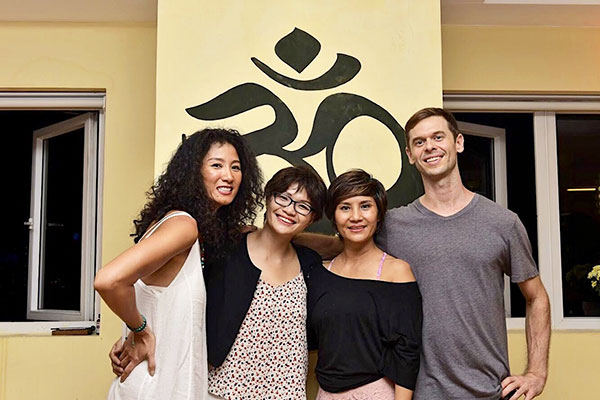H) Redpoint Yoga tập trung vào nội dung gì?
Triết lý Yoga Cổ đại
Khoa học thế kỉ 21
Tâm lý học chiều sâu Carl Jung
H) Redpoint kết hợp các yếu tố này như thế nào?
Đơn giản là:
Luyện tập yoga trên thảm ➞ Triết lý yoga cổ đại + Khoa học thế kỉ 21
Luyện tập yoga ngoài thảm ➞ Triết lý yoga cổ đại + Tâm lý học Jungian
Khi luyện tập yoga trên và ngoài thảm, chúng ta giữ cân bằng và kết nối
Học cách luyện tập thông minh hơn, không cần vất vả hơn
Học lý thuyết ➞ Học cách thực hành ➞ Tận hưởng thành quả
|
1A) What problem is yoga trying to solve?
Our mind was made to think. It loves to create random thoughts – about 60,000 a day. Many of these thoughts tend to be worried thoughts.
And if we aren’t careful, we can get lost in these thoughts. As a result, we confuse the outside world as being a reflection of our thoughts. Clearly, these are not the same thing. Yoga is a practice that helps us identify this and work on a solution. Click here for the full answer |
2A) How has yoga evolved?
Yoga was formally established in India with the Yoga Sutras, around the 4th century CE.
At this time, yogis were ascetics – people who withdrew from society to seek deeper spiritual meaning. Rather than practicing yoga poses, the emphasis was on seated meditation. In the last 100 years, the emphasis has shifted – start with yoga poses on the mat, and let everything progress from there. Click here for the full answer |
|
1B) How does yoga solve this problem?
The solution, according to yoga, is to first observe our thoughts. Bring awareness to the fact that we are having a thought and that we are lost in it. This will help to slow our stream of thoughts.
After we establish this deeper awareness, then we can begin the bigger challenge of letting go of our attachment to these thoughts. This sounds very Buddhist, but yoga’s method has key differences. The theory is simple. Yet the practice is the biggest challenge we face – letting go of our nagging inner critic. Click here for the full answer |
2B) What does the “8 Limb” method look like today?
Yogis begin with the 3rd Limb – yoga poses (asana). Then the 4th Limb – breathing practices (pranayama).
After establishing this foundation, yogis “branch out” to the other limbs. Limbs 5-8 involve progressively deeper states of meditation. Limbs 1 & 2 involve ethical practices, mindfulness practices and lifestyle changes. Click here for the full answer |
|
1C) What is yoga’s method?
The practice of yoga is known as the Ashtanga, or “8 Limb” method. Each of these limbs are a different way to practice yoga. When we combine them, they help us to slow our thoughts and let go of our attachment to them.
We start by practicing yoga poses on the mat. Then we incorporate mindfulness practices. Meditation is also an essential (and advanced) part of a complete yoga practice. When we practice over time, our mind has less control over us. We still have (worried) thoughts, but they no longer run the show like they did before. We see things more clearly. Click here for the full answer |
2C) What do beginner, intermediate and advanced yoga practices look like?
Beginner: Practice yoga 3x a week in a studio
Intermediate: Develop a meditation practice Advanced: Train your mind to stay in the present moment Click here for the full answer |
And if we aren’t careful, we can get lost in these thoughts. As a result, we confuse the outside world as being a reflection of our thoughts.
Clearly, these are not the same thing. Yoga is a practice that helps us identify this and work on a solution.
Click here for the full answer
After we establish this deeper awareness, then we can begin the bigger challenge of letting go of our attachment to these thoughts. This sounds very Buddhist, but yoga’s method has key differences.
The theory is simple. Yet the practice is the biggest challenge we face – letting go of our nagging inner critic.
Click here for the full answer
We start by practicing yoga poses on the mat. Then we incorporate mindfulness practices. Meditation is also an essential (and advanced) part of a complete yoga practice.
When we practice over time, our mind has less control over us. We still have (worried) thoughts, but they no longer run the show like they did before. We see things more clearly.
Click here for the full answer
At this time, yogis were ascetics – people who withdrew from society to seek deeper spiritual meaning. Rather than practicing yoga poses, the emphasis was on seated meditation.
In the last 100 years, the emphasis has shifted – start with yoga poses on the mat, and let everything progress from there.
Click here for the full answer
After establishing this foundation, yogis “branch out” to the other limbs.
Limbs 5-8 involve progressively deeper states of meditation.
Limbs 1 & 2 involve ethical practices, mindfulness practices and lifestyle changes.
Click here for the full answer
Intermediate: Develop a meditation practice
Advanced: Train your mind to stay in the present moment
Click here for the full answer
Any questions or comments, send us your thoughts!



